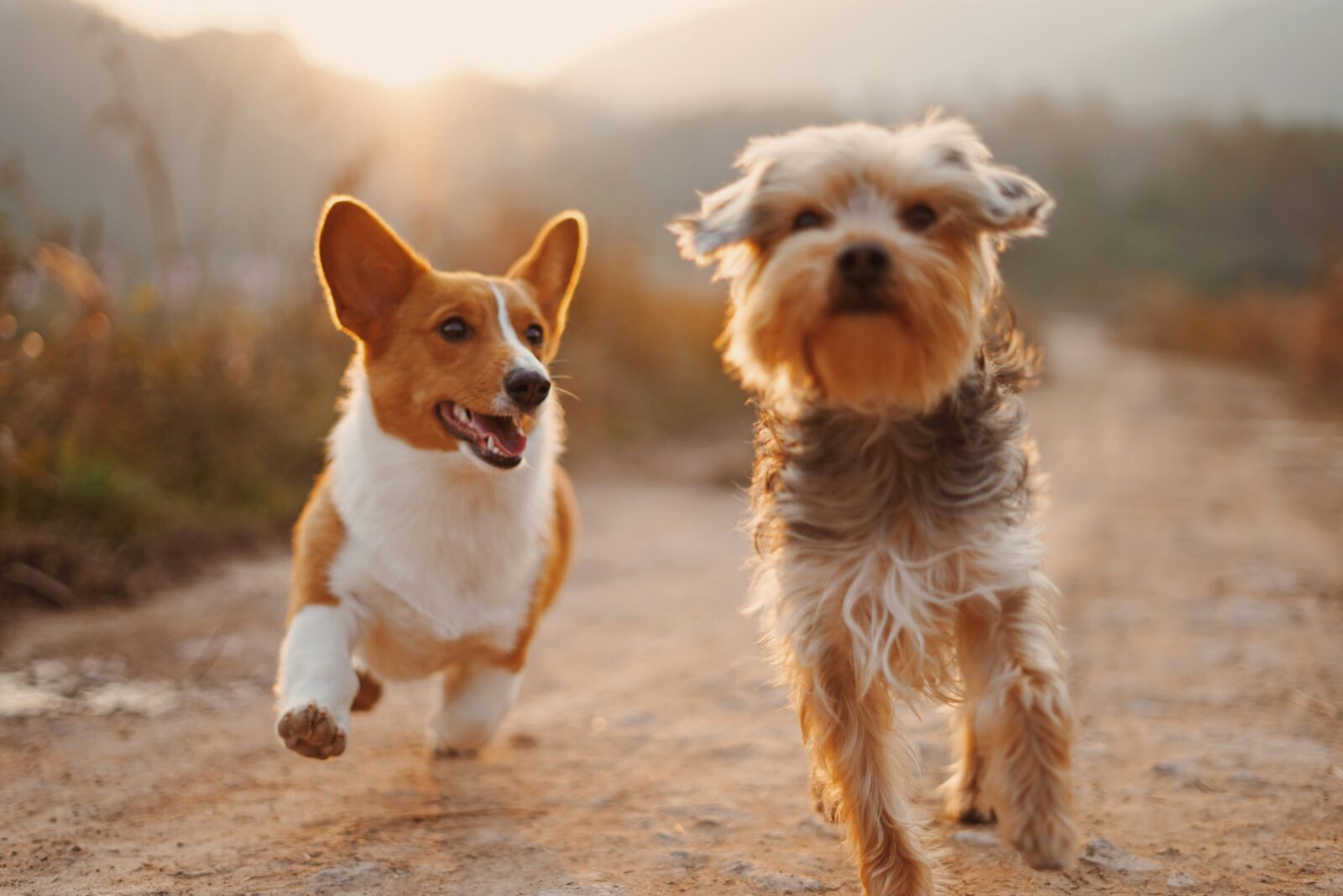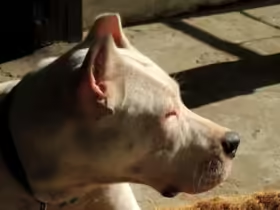Introduction
Living in a multi-pet household with both dogs and cats can be incredibly rewarding, but it also comes with its own set of challenges. One of the biggest hurdles is ensuring that both pets understand each other’s body language to maintain peace and harmony. Dogs and cats have vastly different ways of communicating, and misunderstanding these signals can lead to stress, anxiety, and even conflicts between your furry friends. In this blog, we’ll delve into the intricacies of dog and cat body language, provide practical tips for fostering better communication, and ultimately help you create a more harmonious home.
Understanding Dog Body Language
Dogs primarily communicate through body posture, facial expressions, and vocalizations. Here’s a breakdown of key signals:
1. Tail Position and Movement
- Wagging Tail: A wagging tail doesn’t always mean a happy dog. A slow wag with a low tail might indicate insecurity, while a fast wag with a high tail can show excitement or even aggression.
- Tucked Tail: When a dog tucks its tail between its legs, it’s a sign of fear or submission.
- Raised Tail: A stiff, raised tail usually signals dominance or alertness.
2. Ears
- Forward Ears: When a dog’s ears are perked forward, it indicates curiosity or attentiveness.
- Flattened Ears: Flattened ears against the head often signal fear, submission, or discomfort.
3. Eyes
- Direct Stare: A direct stare can be seen as a challenge or sign of dominance.
- Avoiding Eye Contact: Dogs that avoid eye contact may be showing submission or discomfort.
4. Posture
- Relaxed Stance: A dog standing with a relaxed body, loose limbs, and an open mouth is generally comfortable and calm.
- Tense Stance: A stiff body, raised hackles, and closed mouth often indicate aggression or anxiety.
5. Vocalizations
- Barking: Depending on the pitch and context, barking can express excitement, warning, or distress.
- Growling: Growling is usually a warning sign of discomfort, fear, or aggression.
Understanding Cat Body Language
Cats are more subtle in their communication than dogs, relying heavily on body language and facial expressions. Here are key signals to watch for:
1. Tail Position and Movement
- Upright Tail: An upright tail, especially with a slight curve, indicates a confident and friendly cat.
- Twitching Tail: Quick, twitching movements can signal irritation or excitement.
- Puffed-Up Tail: A puffed-up tail is a defensive posture, indicating fear or aggression.
2. Ears
- Forward Ears: When a cat’s ears are pointed forward, it suggests curiosity or attentiveness.
- Flattened Ears: Flattened ears can indicate fear, aggression, or extreme discomfort.
3. Eyes
- Slow Blinks: A slow blink from a cat is a sign of trust and relaxation.
- Dilated Pupils: Wide, dilated pupils can signal excitement, fear, or aggression, depending on the situation.
4. Posture
- Arched Back: An arched back with fur standing on end is a clear sign of fear or aggression.
- Crouched Position: A cat that is crouching close to the ground may be feeling fearful or anxious.
5. Vocalizations
- Purring: While purring is often a sign of contentment, it can also occur when a cat is nervous or unwell.
- Hissing: Hissing is a clear sign of fear or aggression, signaling a desire to be left alone.
Key Differences Between Dog and Cat Body Language
Understanding the differences in communication styles between dogs and cats is crucial to fostering harmony in a multi-pet household. Here are some key contrasts:
1. Tail Language
- Dog: A wagging tail can mean many things, from happiness to aggression.
- Cat: A rapidly twitching tail usually signals irritation or the desire to be left alone.
2. Eye Contact
- Dog: A direct stare can be confrontational and should be avoided.
- Cat: Cats may use slow blinking as a form of non-threatening communication.
3. Approaching Behavior
- Dog: Dogs often approach each other head-on as a way of initiating play or social interaction.
- Cat: Cats prefer more cautious, sideways approaches and may feel threatened by direct confrontations.
Tips for Fostering Harmony in a Multi-Pet Household
With an understanding of dog and cat body language, you can take proactive steps to ensure both pets coexist peacefully. Here are some tips to help foster harmony:
1. Gradual Introductions
- When introducing a new pet, do so gradually. Allow each animal to get used to the other’s scent before allowing direct contact.
2. Supervised Interactions
- Supervise early interactions to prevent any aggressive behavior. Reward positive interactions with treats and praise.
3. Provide Separate Spaces
- Ensure each pet has its own space where it can retreat if it feels stressed or overwhelmed.
4. Positive Reinforcement
- Use positive reinforcement to reward calm and friendly behavior between pets. This helps build positive associations.
5. Respect Boundaries
- Learn to recognize when one pet needs space. For example, if your cat is hissing or your dog is growling, separate them and give them time to calm down.
6. Regular Playtime
- Provide regular playtime and mental stimulation for both pets. This helps burn off excess energy and reduce stress.
7. Monitor Body Language
- Continually monitor your pets’ body language to gauge their comfort levels. Adjust their environment or interactions if you notice signs of stress.
Recognizing Signs of Stress and Conflict
It’s important to recognize early signs of stress or conflict between your dog and cat so you can intervene before a situation escalates. Look for the following warning signs:
1. Staring or Stalking
- If one pet is staring intently or stalking the other, this could indicate a brewing conflict.
2. Growling or Hissing
- Growling, hissing, or barking can be signs of discomfort or aggression.
3. Avoidance Behavior
- If one pet starts avoiding the other or hiding, it may feel threatened or stressed.
4. Unprovoked Attacks
- Sudden attacks or aggressive behavior without provocation should be addressed immediately.
How to Address and Resolve Conflicts
If conflicts arise, it’s essential to address them promptly and calmly. Here’s how you can resolve issues:
1. Separate the Pets
- If a conflict escalates, separate the pets immediately and give them time to calm down in different areas of the house.
2. Reintroduce Gradually
- After a conflict, reintroduce the pets gradually and under supervision. Reward calm behavior with treats.
3. Consult a Professional
- If conflicts persist, consult a professional animal behaviorist for guidance. They can provide personalized strategies to improve the relationship between your pets.
Conclusion
Understanding dog and cat body language is key to fostering harmony in a multi-pet household. By learning to interpret their signals and taking proactive steps to encourage positive interactions, you can create a peaceful environment where both pets thrive. With patience, observation, and consistent effort, your dog and cat can coexist happily, enhancing your home with their unique personalities and companionship.











Leave a Reply